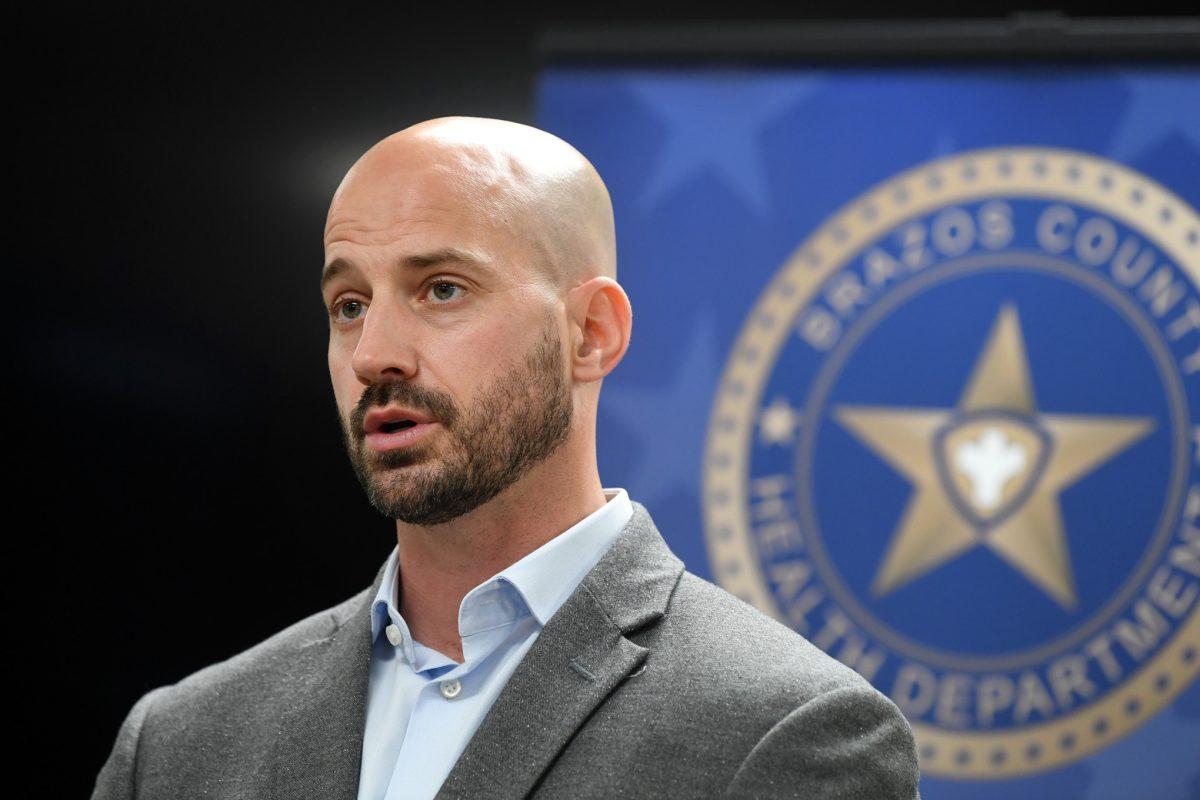The Brazos County Health District (BCHD) held a press conference on July 24 to discuss hospital capacity and schools reopening.
To begin, Brazos County Health Authority Dr. Seth Sullivan provided the most recent COVID-19 statistics. To date, there have been a total of 3,635 confirmed cases, 2,858 recovered patients, 43 deaths and 26,904 COVID-19 tests performed in the county. Currently there are 734 active cases and 17 hospitalizations. In addition, the total hospital bed capacity in Brazos County is at 73 percent and ICU beds are at 69 percent. Below are some of the main takeaways from the conference.
1. How hospitals are preparing for a surge in cases
Surge capacity is a representation of the amount of space for and ability to accommodate a large group of incoming patients. Sullivan said while a surge has not happened in Brazos county yet, the BCHD’s surge capacity plan includes internal surge, which involves using areas of the hospital that are not normally used for housing patients for COVID-19, such as extra operating rooms which are equipped to take care of patients. This plan would also include bringing in more medical personnel to assist with the increase in patients. After this first step, Sullivan described the following secondary plan involving extra beds.
“[There are] many mechanisms available to us to draw in extra healthcare personnel to staff those beds,” Sullivan said. “If then we went through that surge capacity to require even further beds then we would be looking at alternate care sites.”
2. Schools reopening
Sullivan said schools are essential to provide learning, social services and meals to children, and the BCHD has been working closely with school districts to evaluate plans for the coming school year. Districts have considered in-person versus online learning, administrative action by teachers and the safety of the students. The state of Texas has ordered that the decision to perform in-person or online learning shall be delegated by local health officials, of which Sullivan said there has been little guidance.
“If this remains my decision, it won’t be a rash one,” Sullivan said. “It will be evidence-based. We have been collecting that evidence, and will continue to collect that evidence. That evidence evaluates things like the effect of the virus in elementary school age kids.”
Sullivan also noted that young children commonly do not develop a severe form of the virus. According to Sullivan, the BCHD is also still collecting data on the recent surge of cases in the 18 to 25-year-old range, while keeping in mind the thousands of students returning to College Station in August.
3. What to do when social distancing is not possible
A&M has released many regulations, adapting to the effects of COVID-19 such as wearing masks and maintaining a distance of six feet between others. Another one of these regulations is limiting bus capacity to 50 to 60 passengers in a bus at a time. In situations such as these where social distancing may not always be possible, Sullivan said it could be a high risk situation, especially if a passenger rides for longer than 10 or 15 minutes.
“The masks are critical. The masks do help. They help especially in a situation like that,” Sullivan said. “So, if we can maintain that six foot radius and be wearing masks, that makes that environment safer, but we see a gradation of risks for lots of different activities that are out there. A packed bus is definitely high on that risk.”
Takeaways from July 24 BCHD press conference
July 24, 2020
Photo by Courtesy of Laura McKenzie/The Eagle
Brazos County Alternate Health Authority Dr. Seth Sullivan speaks Monday, July 6, 2020 during the COVID-19 press conference at the Brazos County Health District.
0
Donate to The Battalion
Your donation will support the student journalists of Texas A&M University - College Station. Your contribution will allow us to purchase equipment and cover our annual website hosting costs.
More to Discover









